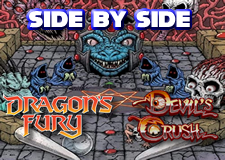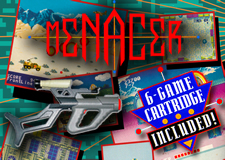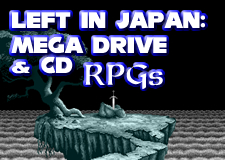As the creator of Electronic Arts’ Strike series, Mike Posehn started a franchise that went on to sell millions and gave players the chance to mix strategy with arcade action. It also let them blow lots of stuff up. Sega-16 chatted with M. Posehn about his time at EA and his work on the Strike games.
Features
Side by Side: Dragon’s Fury/Devil’s Crush (Genesis vs. TG-16)
Pinball is always fun, especially when monsters and quasi-satanic visuals are involved! There were some major differences between the Turbo Grafx-16 release of Devil’s Crush and Dragon’s Fury on the Genesis though, and we gave ’em both some major playtime to see which was the better game. Check out the latest installment of Side by Side and see which you should get.
Side by Side: Dungeon Explorer (Sega CD vs. TG-16)
The multi-player dungeon crawler Dungeon Explorer debuted on the TurboGrafx-16 and eventually hacked and slashed its way to the Sega CD. Which version is better? Well, you’ll have to read our full comparison and see!
Sega Gear: Menacer Light Gun
Every console has a light gun, the Genesis included. Unfortunately, it seems that the 16-bit generation overall didn’t pay much attention to them, as both the Menacer and its SNES counterpart, the Super Scope, received only a handful of games in total. Despite the small library, there are some good games out there, like T2: the Arcade Game and Body Count. So, is it worth tracking down a Menacer for your console?
Left in Japan: Mega Drive & Mega CD RPGs
When you think of RPGs, the Genesis isn’t the first console to come to mind. There are quite a few memorable ones on the system here in America, such as the Phantasy Star series, the Shining games and Warsong (Langrisser Hikari) but the genre was never really supported as well as it was on either the PC-Engine or the SNES. In fact, most of the RPGs that did come out on the Mega Drive and Mega CD never got released stateside and were left behind in Japan, where the language barrier looms as large as the Great Wall of China.





